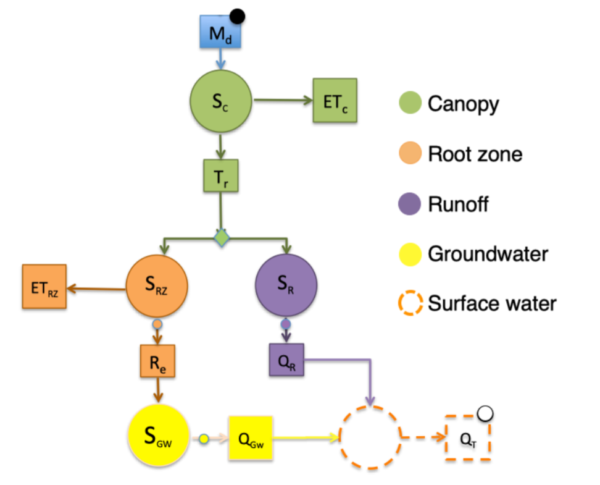In this work, the semi-distributed hydrological modeling system GEOframe-NewAge was integrated with a web-based decision support system implemented for the Civil Protection Agency of the Basilicata region, Italy. The aim of this research was to forecast in near real-time the most important hydrological variables at 160 control points distributed over the entire region. The major challenge was to make the system operational in a data-scarce region characterized by a high hydraulic complexity, with several dams and infrastructures. In fact, only six streamflow gauges were available for the calibration of the model parameters. Reliable parameter sets were obtained by simulating the hydrological budget and then calibrating the rainfall-runoff parameters. After the extraction of the flow-rating curves, six sets of parameters were obtained considering the different streamflow components (i.e., the baseflow and surface runoff) and using a multi-site calibration approach. The results show a good agreement between the measured and modeled discharges, with a better agreement in the sections located upstream of the dams. Moreover, the results were validated using the inflows measured at the most important dams (Pertusillo, San Giuliano and Monte Cotugno). For rivers without monitoring points, parameters were assigned using a principle of hydrological similarity in terms of their geology, lithology, and climate.

How to Cite: Bancheri, M., R. Rigon and S. Manfreda, The GEOframe-NewAge modelling system applied in a data scarce environment, Water, 12, 86, 2019. [pdf]

